Introduction
The right lead magnet can turn quiet website traffic into a steady flow of engaged, qualified leads. But with endless formats and advice online, how do you know which ideas actually work and which are just digital clutter?
The answer lies in choosing the type of lead magnet that gives your audience an instant win. When your offer delivers fast, specific value, you earn attention, trust, and momentum before the first sale ever happens.
In this guide, you’ll explore 13 proven lead magnet ideas designed to attract serious buyers, not casual subscribers. Each one has been tested across real businesses from checklists and templates to quizzes, mini-courses, and resource kits all selected for their clarity, simplicity, and conversion power.
By the end, you’ll know exactly which formats to test, how to match them to your audience, and how to build a lead magnet strategy that grows your list faster and with more qualified leads than ever before.
Key Takeaways
What Makes These Lead Magnet Ideas Truly Effective
- The most effective lead magnets solve one specific, verified problem fast.
- Simplicity converts better than complexity — clarity builds trust faster than volume.
- Real businesses use lead magnets as value exchanges, not giveaways.
- Visibility and follow-up are as important as the magnet itself.
- Alignment between the free offer and the paid solution determines long-term success.
- Small improvements in relevance and positioning often double conversion rates.
- Lead magnets work because they prove value before a single sale is made.
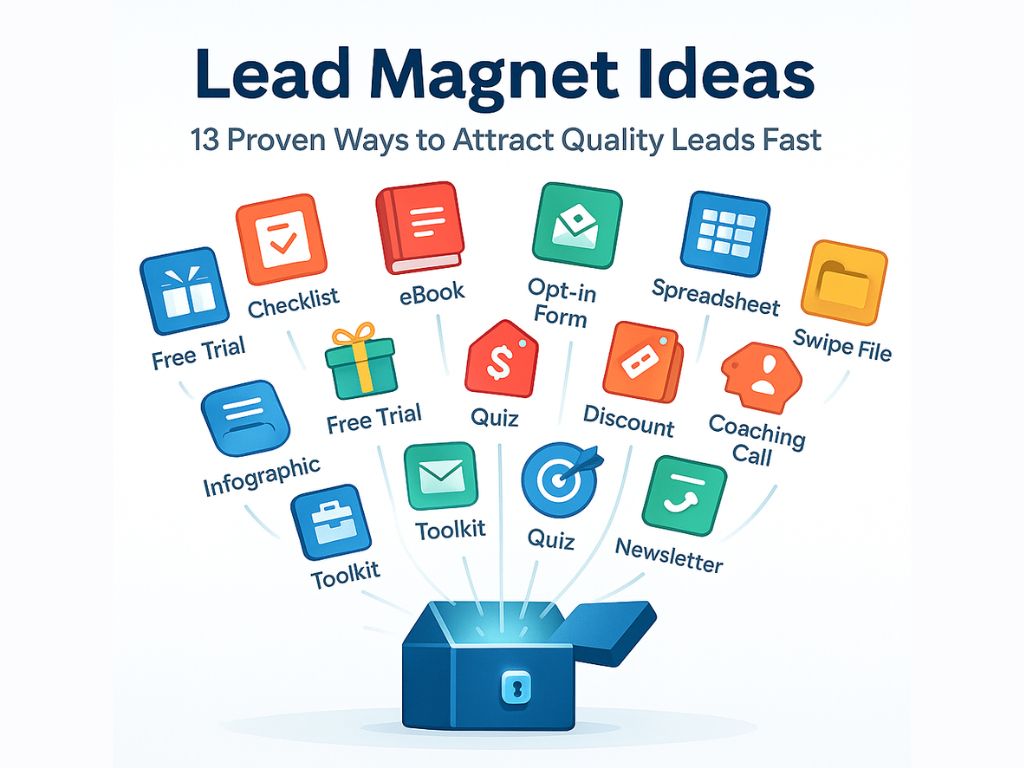
13 Proven Lead Magnet Ideas to Attract Quality Leads Fast
1. Checklists
Checklists remain one of the simplest and most effective lead magnet formats because they promise instant clarity. They work because they reduce cognitive load your audience doesn’t want to analyze; they want to act. A checklist delivers that sense of structure and accomplishment immediately, which makes it one of the highest-converting formats across industries.
The psychology behind it is progress. Each completed box gives a small dopamine reward that reinforces trust in your process. That emotional connection turns your content from “helpful information” into a tangible feeling of success. When your audience associates that sense of progress with your brand, you become the shortcut to achievement.
Checklists are perfect for audiences who crave quick, repeatable wins: content creators, entrepreneurs, and professionals under time pressure.
Example: “The Ultimate Blog Post Launch Checklist”, never miss a crucial SEO step again.
Tip: Keep the design minimal and branded. Use clear sections and checkboxes, and include a short note at the end prompting the next step such as joining your mini-course or downloading a related toolkit.
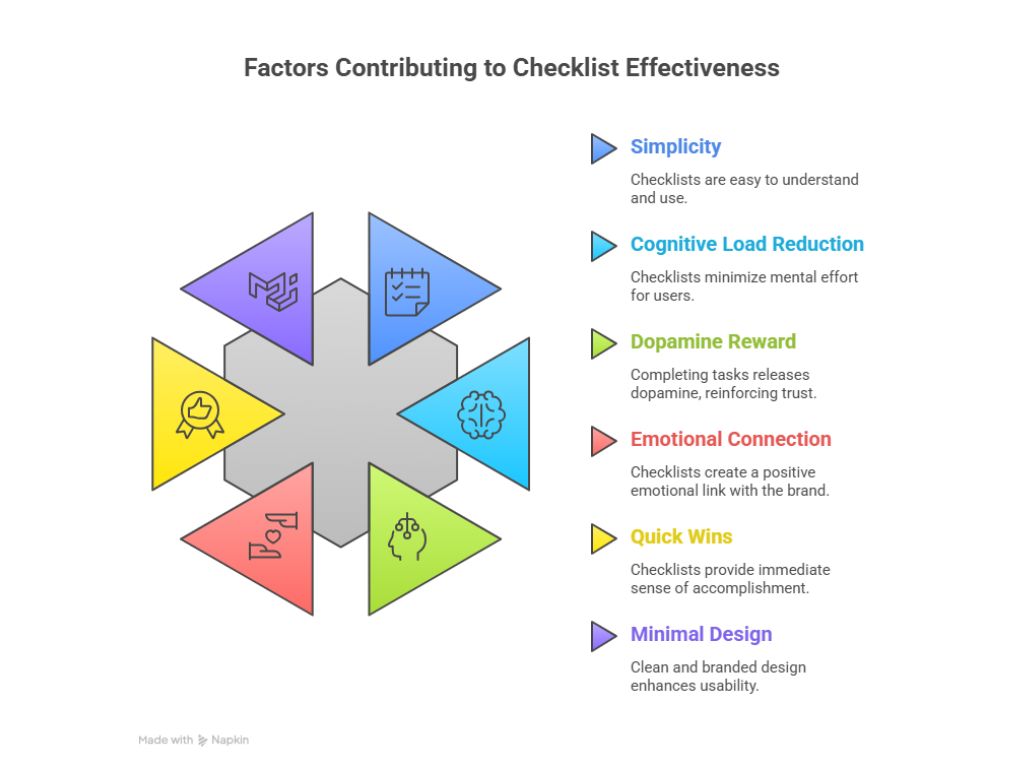
2. Templates
Templates erase the fear of starting from scratch. They give your audience a ready-made structure to work from, saving time and boosting confidence. People download templates because they want to look competent immediately; they want the “professional version” without having to figure out every detail.
That’s what makes templates such powerful trust builders. By giving your audience a pre-built framework, you position yourself as the expert who already knows what works. The moment they start using your file and see results, you’ve proven your value before you ever make a pitch.
Templates work across almost every niche: marketing, design, finance, HR, productivity, and coaching. The key is precision, your template should solve one specific problem completely, not try to cover everything.
Example: “30 Instagram Caption Templates for Instant Engagement.”
Tip: Include a short instruction page or video tutorial that shows users how to customize it. Even two lines of guidance can transform a passive download into an active success moment and that’s what builds authority.
3. Quizzes & Assessments
Quizzes and assessments transform curiosity into participation. They tap into a natural desire for self-discovery, people love learning about themselves, especially when the outcome feels personalized and useful. When designed well, quizzes become a two-way exchange: you get valuable segmentation data, and your audience gets a tailored insight or plan.
Their power lies in personalization. Every result feels custom, even if it’s automated. That sense of relevance increases perceived value and attention retention far more than static PDFs ever could. Quizzes are especially effective when the result naturally leads to your paid solution for example, a quiz that reveals “your business growth type” followed by a guide or consultation offer that fits the outcome.
They also create perfect data loops for email marketing. Each quiz response segment gives you behavioral insight you can use to personalize follow-up campaigns. The audience feels understood; your communication feels bespoke.
Example: “What’s Your Marketing Superpower? Take the Quiz and Get a Custom Report.”
Tip: Deliver results that feel credible and actionable. Avoid vague outcomes like “You’re a Visionary!” Instead, offer specific feedback with one clear next step such as a training link, checklist, or short consultation.
Create High-Converting Lead Magnets From Your Content In Minutes.
Transform your ideas, posts, and videos into irresistible lead magnets — each one designed to grow your audience and your sales.
4. Mini-Courses
Mini-courses are powerful because they combine education, engagement, and anticipation. They don’t just inform, they build a relationship over time. By delivering value in small, structured lessons, you train your audience to open your emails, consume your content, and expect results from your teaching style. That repetitive exposure builds both trust and habit, two ingredients that drive conversions.
Mini-courses work particularly well when your offer requires behavior change or skill development. Each lesson becomes a micro-win that reinforces your authority and moves the subscriber one step closer to your paid solution. Over a few days, you’re not just teaching, you’re conditioning your audience to believe you can help them achieve something tangible.
The delivery format can vary: short videos, daily emails, or a combination of text and exercises. What matters is the sequence each lesson should connect logically to the next, leading toward a single transformation.
Example: “5 Days to Better LinkedIn Networking: Free Email Mini-Course.”
Tip: Focus each lesson on one micro-outcome that can be achieved in under 10 minutes. At the end of the series, invite participants to continue the journey with your paid product or advanced training.
5. Guides & Ebooks
Guides and ebooks position your brand as a teacher and thought leader. They’re ideal when your topic requires context, frameworks, or storytelling to create understanding before conversion. A well-crafted ebook gives your audience a feeling of depth that you know not just what to do, but why it matters.
The best guides balance readability with authority. Long-form doesn’t mean complicated. Readers should be able to skim through headings, visuals, and examples and still leave with clear, actionable insight. That accessibility makes your expertise approachable a key factor in building trust early.
Ebooks also extend your brand footprint. Because they’re often saved, shared, or printed, they keep your business visible long after the initial download. This long-tail exposure compounds over time, especially when your ebook links back to key resources, tools, or offers.
Example: “The Beginner’s Guide to Facebook Ads: From Zero to Your First Sale.”
Tip: Don’t hide your expertise behind fluff. Replace long introductions with useful context, use visuals to reinforce points, and end with a simple next step like accessing a free calculator or joining a related training.

6. Worksheets & Workbooks
Worksheets and workbooks bridge the gap between information and transformation. They invite readers to take action to write, plan, calculate, or reflect which moves them from passive observers to active participants. This shift from consumption to creation deepens engagement and creates emotional investment.
When someone fills in a worksheet, they’re not just learning from you; they’re learning through you. That self-guided discovery builds trust faster than any claim or testimonial. For coaching, consulting, and personal development niches, this kind of interactivity transforms a free resource into a meaningful experience.
Strategically, workbooks can also serve as soft pre-qualifiers for your paid programs. The questions and exercises you include naturally identify serious participants, people who are already thinking and acting at a higher level of commitment.
Example: “2025 Goal-Setting Workbook: Plan, Prioritize, Succeed.”
Tip: Design your workbook to look intentional, not like a Word document. Use consistent spacing, prompts, and subtle branding. Include reflection sections that ask, “What’s your next step?” a gentle bridge to your coaching or consultation offer.
7. Toolkits & Resource Lists
Toolkits and resource lists are magnets for busy professionals who value time as much as expertise. They work because they remove decision fatigue, instead of researching dozens of tools or comparing endless options, your audience gets a curated, trusted list from someone who’s already done the heavy lifting. This saves hours of effort and immediately positions you as a guide, not just another content creator.
The real power of a toolkit lies in authority transfer. When your audience adopts your recommendations and sees results, your credibility compounds. Each tool you endorse becomes an extension of your expertise. That trust becomes leverage the next time you suggest a paid solution, they’re already predisposed to believe it will work.
Toolkits are ideal for B2B audiences, creators, and entrepreneurs who operate in complex digital environments. They bring clarity where overwhelm exists, which makes them one of the most universally appealing lead magnet formats.
Example: “The Essential Copywriter’s Toolkit: 12 Apps to Boost Your Writing.”
Tip: Don’t just list the tools, explain why each one matters. Add a sentence of context or a use case that connects the tool to a tangible outcome. You can also include affiliate links responsibly if you disclose them upfront, turning your toolkit into both a trust and revenue asset.

8. Webinars & Live Trainings
Webinars and live trainings create connections at scale. They combine the intimacy of a personal conversation with the efficiency of one-to-many teaching. Unlike static downloads, live sessions offer interaction, your audience can ask questions, hear tone, and feel part of an experience. That human element drives trust faster than any written content can.
Webinars work best when they focus on a single transformation: solving one clear, specific problem in real time. The key is positioning the topic must feel urgent, the content must deliver quick clarity, and the session must end with a natural bridge to your offer. When structured this way, webinars not only educate but qualify.
They also produce enduring assets. A single live session can later be repurposed into an evergreen webinar, segmented video clips, or a gated replay funnel. This makes webinars one of the highest-leverage lead magnet formats available.
Example: “How to Double Your Email List in 30 Days: Free Live Training.”
Tip: Record every session and repurpose strategically. Turn highlights into social media clips or gated replays, and follow up with a thank-you email containing additional resources it extends the value far beyond the live event.
9. Swipe Files
Swipe files are creativity accelerators. They give your audience real, working examples of what success looks like headlines, ad copy, email sequences, design layouts and remove the fear of starting from nothing. Instead of theory, you’re offering proof. That proof builds instant authority.
The magic of swipe files is in transformation through imitation. People don’t just download them for inspiration; they use them to model their own success. When your swipe file becomes the foundation for their first win, your credibility becomes personal. That’s the moment they start seeing you as a mentor, not a marketer.
Swipe files are especially effective for creative industries copywriting, design, marketing, and content strategy where pattern recognition and proven formulas save time and reduce errors.
Example: “10 High-Converting Email Sequences You Can Steal.”
Tip: Add commentary or annotations explaining why each example works. A few sentences of analysis turn your swipe file from a collection of samples into a masterclass in applied strategy.
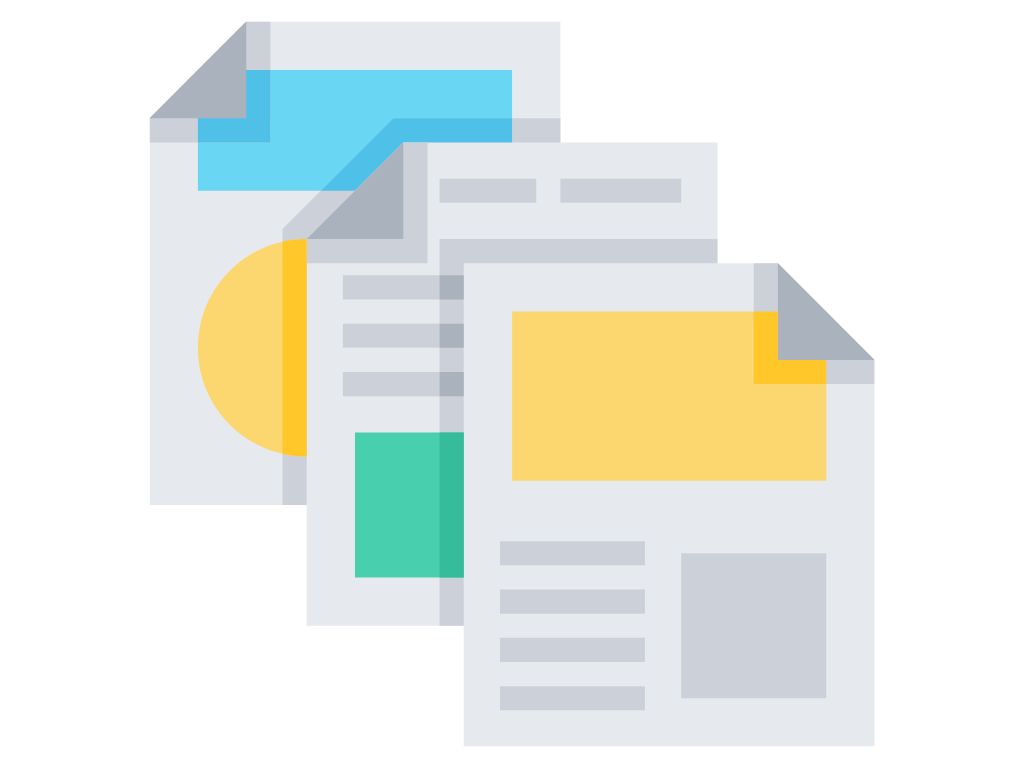
10. Email Challenges
Email challenges are built on consistency and micro-commitment. They work because they transform a passive audience into active participants over a defined period typically five to seven days. Each email becomes a small task, building anticipation for the next, and that steady engagement keeps your brand top-of-mind throughout the challenge.
Psychologically, this format taps into habit formation. Once your subscriber starts taking daily action, momentum kicks in. Every completed step creates satisfaction and a sense of progress. By the time the challenge ends, your brand is associated with discipline and achievement, an emotional pairing that strengthens buying intent.
Email challenges work best when they align directly with your paid offer. If you sell productivity coaching, run a “7-Day Focus Reset.” If you teach marketing, host a “Week of Profit-Driven Prompts.” The goal is not just to deliver value but to prepare the participant for your next-level solution.
Example: “7-Day Inbox Zero Challenge: Reclaim Your Email, One Day at a Time.”
Tip: Add a pre-launch sequence to build anticipation before the challenge begins. During the challenge, include social proof or community features (like sharing wins or results) to reinforce engagement.
11. Calculators & Generators
Calculators and generators appeal to one of the most powerful psychological triggers in marketing: personalization. People trust results that feel specific to them. When someone inputs their own data and receives an instant, tailored outcome, the perceived value skyrockets even if the underlying logic is simple.
These interactive lead magnets convert because they promise clarity fast. They don’t teach; they reveal. Whether it’s calculating return on investment, pricing, health metrics, or strategy readiness, the user walks away with a personal insight they didn’t have before. That shift from curiosity to understanding builds credibility instantly.
Strategically, calculators work best when the output connects directly to your offer. For example, an “Ad Budget Calculator” can lead to a free strategy session on campaign optimization. A “Profit Margin Estimator” can transition into a business audit or consulting service. Each calculation should naturally open the door to the next step in your funnel.
Example: “Ad Budget Calculator: Find Your Ideal Spend for Maximum ROI.”
Tip: Keep the inputs simple no more than five fields. Offer the summary instantly, then deliver the full analysis via email to capture the lead and continue the conversation.

12. Case Studies
Case studies convert because they replace claims with proof. They show transformation in action, a relatable person or company facing a real problem, applying your process, and achieving a measurable result. That combination of story and data creates trust faster than any sales page ever could.
At their core, case studies work on emotional mirroring. Readers see themselves in the subject’s story. They begin thinking, “If it worked for them, it might work for me.” That identification is what moves them from curiosity to belief.
The best case studies balance narrative and structure. They tell a clear story (problem → process → result) while linking every improvement back to your method or offer. Case studies are especially effective for service providers, coaches, and agencies audiences that sell transformation.
Example: “How One Startup Gained 10,000 Email Subscribers in 90 Days: A Step-by-Step Case Study.”
Tip: Include metrics that show impact, but don’t stop there. Add insights or lessons learned so the reader takes away value even if they never hire you. That generosity reinforces authority and authenticity simultaneously.
13. Exclusive Discounts or Trials
Exclusive offers tap into urgency and perceived privilege. They work because they signal opportunity, not just savings. When your audience feels they’re gaining access to something special or time-limited, they’re far more likely to act immediately. This combination of scarcity and exclusivity activates one of the strongest behavioral motivators in marketing: the fear of missing out on value others can’t get.
Discounts and trials are especially effective for software, memberships, and subscription-based businesses. They remove friction by lowering the perceived risk of entry while showcasing real value through experience. Even a short trial allows users to build habit and attachment, two factors that drive post-trial conversion.
The key is control. The offer must feel intentional, not desperate. It’s not about slashing prices, it’s about rewarding action. When framed correctly, your audience doesn’t see it as a discount; they see it as an advantage.
Example: “Get 14 Days Free: Exclusive Early Access to Our Productivity Platform.”
Tip: Pair exclusivity with urgency. Tie your offer to a milestone like a product launch, update, or event and communicate clearly what happens after the trial ends. The goal isn’t just sign-ups; it’s retention through anticipation.
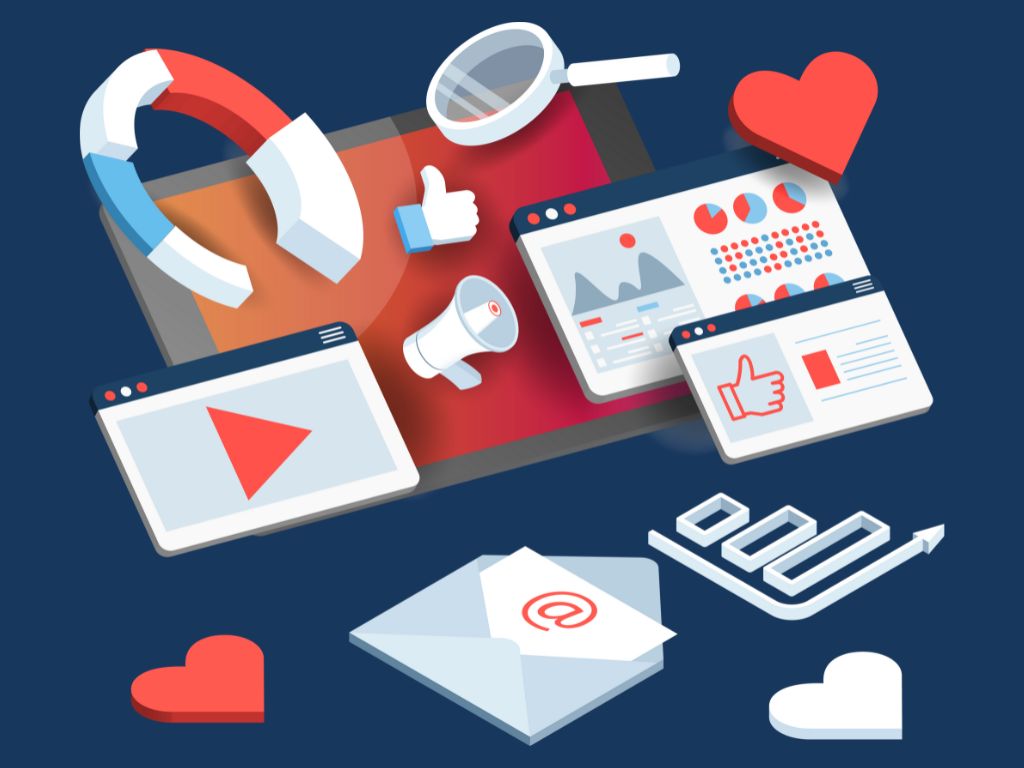
Why These Lead Magnet Ideas Work Now
The way people make decisions online has changed. Attention spans are shorter, competition is louder, and audiences expect instant results. Lead magnets that worked five years ago, long ebooks, generic newsletters, slow follow-ups no longer hold attention. What works now are assets that deliver immediate clarity and visible value.
Modern lead magnets succeed because they remove friction. Instead of asking for time or effort, they give something useful right away: a checklist that fixes a problem, a quiz that reveals insight, or a template that saves an hour. This instant reward satisfies the brain’s need for completion, building trust before any sale.
Each of the 13 ideas in this guide aligns with the way people actually browse and buy today. They promise small but meaningful wins, reinforcing credibility through results, not hype. When users experience progress from your free content, they naturally assume your paid offer can take them even further.
Ultimately, these ideas work because they respect the audience. They meet real needs, solve real problems, and make value the first interaction not the last. In a digital world saturated with noise, generosity and precision have become the new competitive edge.
Create High-Converting Lead Magnets From Your Content In Minutes.
Transform your ideas, posts, and videos into irresistible lead magnets — each one designed to grow your audience and your sales.
How Real Businesses Use Lead Magnet Ideas
Lead magnets aren’t abstract marketing tactics, they’re practical tools used every day by real businesses to attract and qualify customers. The most successful examples come from brands that match the right idea to the right audience, using simple but focused offers to drive measurable results.
A local marketing agency, for example, uses a “Free SEO Audit Checklist” to identify business owners who are serious about improving visibility. Each download sparks a conversation that naturally leads to a consultation. It’s not just a freebie, it’s a pre-sales filter disguised as value.
An online fitness coach runs a “7-Day Strength Challenge” through email. Each day delivers one actionable workout, and by the end of the week, participants are primed to invest in the full training program. The challenge isn’t designed to sell, it’s designed to prove results first.
A boutique e-commerce brand offers a “Style Finder Quiz” that recommends the perfect product mix based on personality and preferences. Customers receive a personalized shopping list and a discount code. The quiz doesn’t just generate leads; it drives immediate, data-informed sales.
Even service-based solopreneurs benefit. A copywriter offering “10 Proven Headlines You Can Use Today” attracts small business owners who value persuasive communication and are one step away from hiring professional help.
These examples share one principle: every effective lead magnet delivers a real result before the sale. Whether it’s clarity, confidence, or a quick win, each interaction builds trust that converts casual browsers into loyal buyers.
According to HubSpot’s Marketing Insights, businesses that use purpose-built lead magnets tied directly to their offers see up to 2.3x higher conversion rates compared to those using generic giveaways.
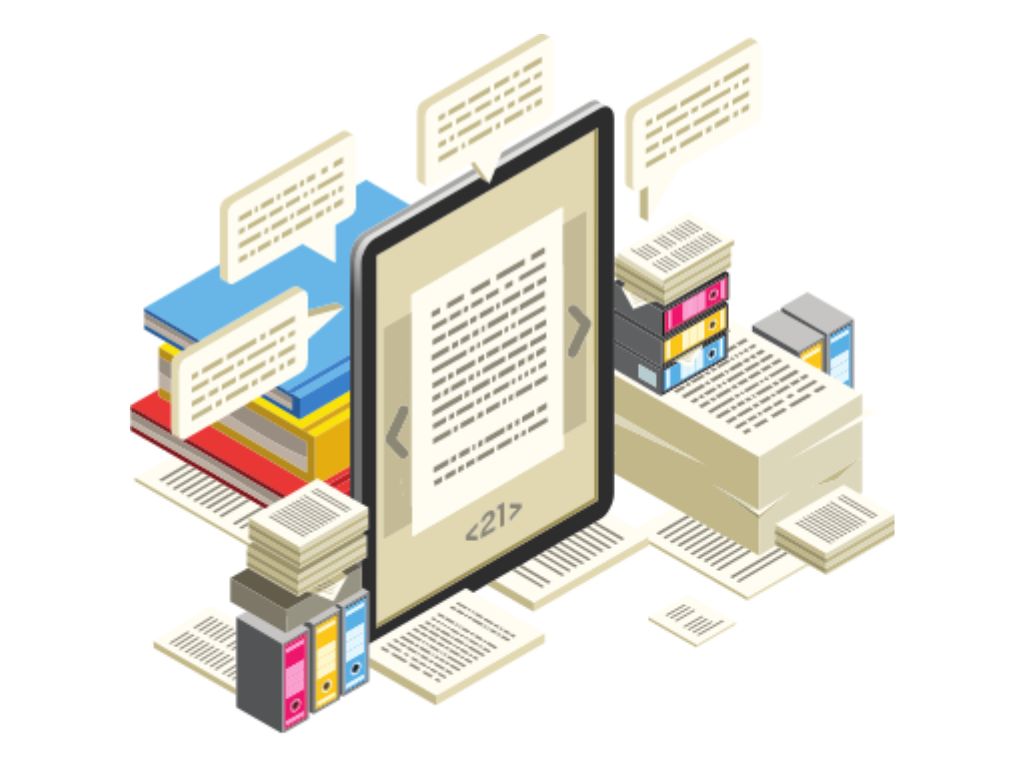
Where Lead Magnets Fail and How to Fix Them
Even the best ideas can collapse in execution. Lead magnets don’t fail because the concept is wrong; they fail because friction, confusion, or inconsistency disrupts the user journey. Understanding where the breakdown happens is the first step toward fixing it.
1. Solving the Wrong Problem
When your lead magnet doesn’t address what your audience actually struggles with, it gets ignored. Relevance is non-negotiable.
Fix: Build around verified audience pain points, not assumptions. Validate before you create.
2. Making It Too Heavy
Long, complex resources feel impressive but exhaust attention. The longer it takes to see value, the faster users drop off.
Fix: Keep it fast and focused. Deliver one meaningful win in minutes.
3. Hiding Your Offer
A powerful lead magnet buried in your site is invisible. Discovery drives conversion.
Fix: Place your offer at high-intent moments at the end of helpful content or inside tutorials.
4. Skipping the Follow-Up
Collecting an email without nurturing it wastes the moment of highest engagement.
Fix: Automate a follow-up that delivers extra value and leads naturally to your core offer.
5. Breaking Consistency
If your tone, visuals, or promises change between the lead magnet and your brand, trust collapses.
Fix: Align every touchpoint with the same message, same standard, same voice.
Each fix strengthens continuity, reduces friction, and restores trust turning your lead magnet from a one-time freebie into a dependable conversion engine.

Conclusion
Lead magnets aren’t just list-building tools. They’re trust-building systems. The difference between a download and a conversion lies in how intentionally you design the exchange.
Each idea in this guide from checklists and quizzes to workbooks and mini-courses works because it serves a single purpose: solving one real problem, fast. The best lead magnets deliver clarity, not clutter. They show your audience what’s possible before you ever make an offer.
Remember, attention is earned, not captured. Your lead magnet is often the first experience someone has with your brand, which means it sets the tone for everything that follows. When it delivers genuine value, you gain more than a subscriber you gain belief.
You don’t need dozens of lead magnets. You need one that truly works. One that reflects your expertise, respects your audience’s time, and connects naturally to your main offer. That’s how small ideas turn into big momentum and how strangers become loyal customers.
According to HubSpot’s 2025 Marketing Insights, businesses that focus on one high-performing lead magnet tied directly to their core offer generate up to 70% more qualified leads compared to those spreading efforts across multiple unrelated assets.
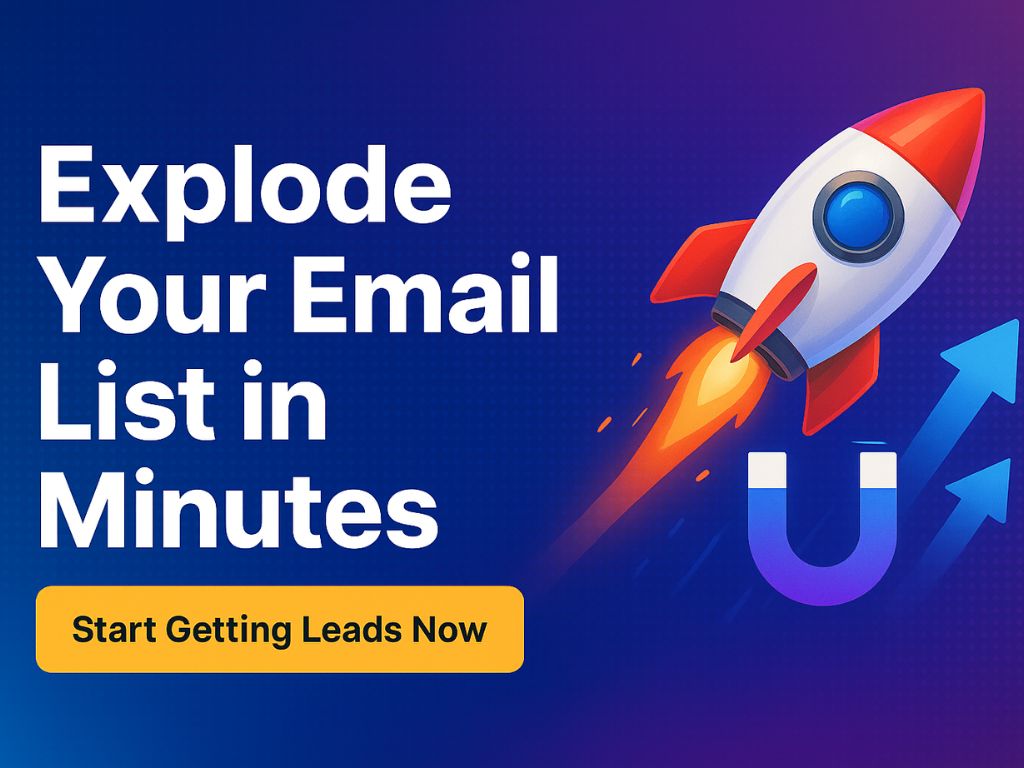
Frequently Asked Questions (FAQs)
What is the most effective lead magnet idea right now?
Checklists and templates remain the most effective because they deliver instant results. They help users complete a task quickly, prove value fast, and require minimal effort to consume all key behaviors in today’s attention-short marketplace.
How do I choose the right lead magnet idea for my business?
Start with your audience’s most pressing problem. The best lead magnet solves one specific pain point that naturally leads into your paid offer. Research what your target customers search for and build your content to meet that demand directly.
Should my lead magnet be short or detailed?
Short almost always wins. The faster your audience experiences success, the stronger the trust you build. If your topic requires more depth, break it into smaller, actionable parts, for example, a short series or mini-course instead of one long guide.
How often should I create new lead magnets?
Only when performance declines or your audience’s needs shift. One high-performing, well-optimized lead magnet can outperform several average ones. Focus on refinement and promotion before creating something new.
Can I use multiple lead magnets at the same time?
Yes, but only if each serves a specific audience segment or buyer stage. Every lead magnet should connect logically to its next step in your funnel. Multiple magnets work best when each one plays a clear, defined role in your strategy.
Pingback: Lead Magnet Examples That Actually Convert - Lead Magnets Creator
Pingback: AI Lead Magnets: How AI Tools Create High-Converting Lead Magnets in Minutes - Lead Magnets Creator